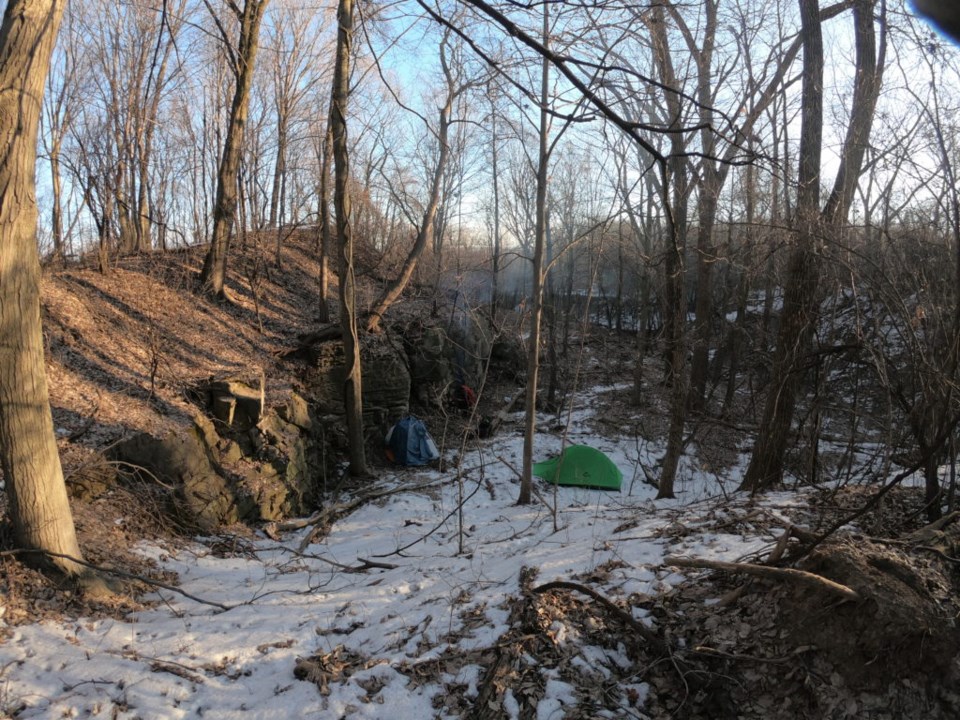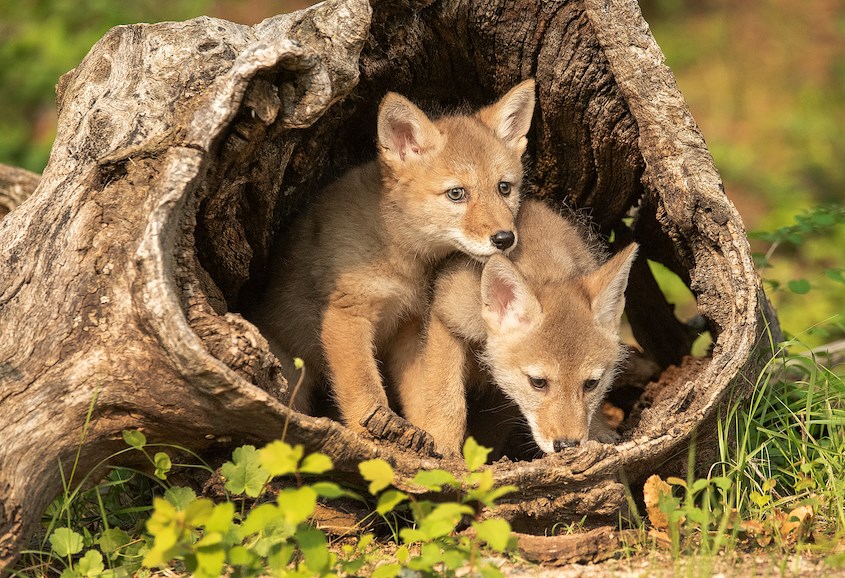
Lately, I’ve noticed some back and forth communications about coyotes online.
This is a species that can’t stick up for itself or voice its own thoughts, so that’s what I am here to do from both an ecological and cultural point of view.
Unfortunately, misinformation can lead to unfair labels with serious consequences. This is a lesson of life, but also for our local coyotes.
Just nights ago, I was sleeping in my tent at -8 on top of the Niagara Escarpment. I relished the opportunity to sleep in nature and not set an alarm. However, the “coyote alarm” went off about five times that night. With clockwork consistency, a nearby coyote would bellow into the night a series of gentle, prolonged howls, almost mistakable for a lone backyard dog. Ten seconds later, others would join in. The familiar NOTL chorus of yipping, yapping, barking, presumably arguing, and singing ensues. It is a soundtrack to my sweet escape, my childhood, and a hint of wildness that these canids bring to our growing human community.
The song comes to an abrupt end, and the silence of the winter night takes over again. I lie in the tent, and briefly find myself contemplating the comments I have seen online about these coyotes.
They are just online comments, but they are real thoughts of real people. And thoughts can be contagious, too. Coyotes deserve a role in the ecosystem as the new “top regulator” in town, not as a villain or pest.

Look at this obvious cascade through history. Over 200 years ago, coyotes were controlled in both population and territory by the likes of wolves, bears, and even cougars. With the sharp removal or dispersal of these top predators over time, coyotes began to reproduce and find greater geographical success. As southern Ontario, NOTL included, continued to chop into our remaining habitat coverage, we saw coyotes successfully adapting to farms and more urban environments. These are intelligent, social canids, remember. When our hometown has less than 10% tree coverage remaining, combined with increased human habitation and an animal who has no more natural predators, we might have to get used to seeing it more.
In the time I wrote this and then got it to The Local, we had Four Mile Creek rerouted in a part of St. Davids with tree loss, and additionally, a quick logging session has occurred at three spots around the Glendale/York Road area. And some of us wonder why we see more coyotes.
In February 2020, there was a disturbing surprise to our town when we learned that several coyote carcasses had been dumped over the bank of the Niagara River. Exterminated by means of poison, hunting, or perhaps both, it was clearly a human intention to rid a local population.
We may never know the reasons or the culprit behind this senseless act, but we know it comes from a place of misunderstanding. Were they concerned about coyotes creeping up on farm animals? It’s really quite rare, and with adequate fencing (which most farm animals should have), coyotes should almost never make a visit. Were they perhaps nervous about letting their small dog out into a big backyard? Life in the country means you are a part of nature. It’s this very nature — it’s coyotes, bees, blossoms, and worms that make the very soil we love so much work. Besides, it’s normally in coyotes’ nature to seek out eastern cottontails, moles, voles, and field mice. Oh, and your delicious garbage, should it be left out in a place where a forest once stood years ago.
What caught my attention the most in this divided comment section was the labelling of coyotes as a public safety issue, which is a gross exaggeration in consideration of these crazy times. I look at the thousands of cumulative hours I have spent in Niagara’s outdoors. How many negative coyote encounters have I experienced? Zero. And I’ve seen dozens upon dozens. How many domestic dogs have I had negative, physical encounters with on our local trails and backroads? I can probably count on two hands. These statistics would likely apply to many others I’m sure, too. Yet, I still love dogs.
I wrote this to combat misinformation about our local canids, the coyotes. Our town hockey team shows a wolf head, valiant and strong like the creature itself. Over time, we have reduced the playing field to suit the coyotes’ interests. They should be appreciated and celebrated, as a last resort for the regulation of rats, rabbits, groundhogs, muskrats, and whoever is next on the food chain from running amok.
And, for the record, I have nothing against hunting. I know professional and for-hire hunters who are contracted to legally come and help property owners with various issues. A couple of my hunting friends over the year have taught my biology brain a great deal about the secrets and movements of local fauna. Sometimes, hunters understand the ecology and population balances of the local animals - but only if they choose to understand them, and engage accordingly.
I’d say our local coyotes deserve a more positive image in their dwindling landscape — a landscape that serves us as a community. I hope the day when we don’t hear coyotes never comes, as then, it would feel like NOTL had lost its last touch of wildness.


